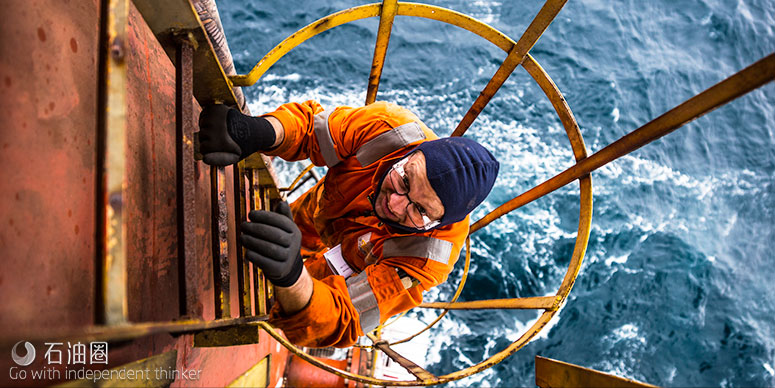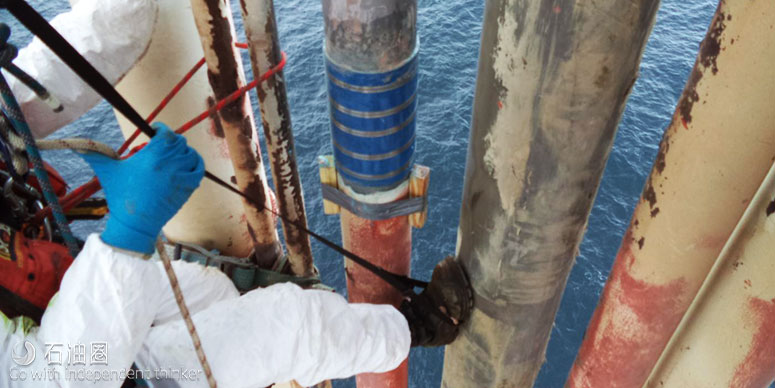When engineers set out to define specifications 20 years ago for offshore units that were expected to stay on site for 20 to 25 years, it was not uncommon to take a very conservative approach. That conservatism is reflected in the many assets that are reaching the end of their design lives but still have the basic structural stability to continue operating for years.
While the hulls and superstructures of some offshore productions systems are fit for continued service, some of the components that have been exposed to significant stresses and fatigue over the years are not. For operations to continue safely, it is vital that the necessary repairs and replacements are carried out effectively.
Evaluating assets
Today asset owners have no difficulty getting assistance with the task of evaluating their facilities for continuing service, including an analysis of critical parts and determining which components have experienced sufficient wear to warrant repair or replacement.
This is a critical first step, but the next step is most likely the one that will determine the cost-effectiveness of the life-extension project. If repairs need to be made, how will they be done, and what products will be used?
Considering composites
Composites could be the answer. Composites have been used for offshore repairs for years in a broad range of applications such as structural repairs to risers, caisson leak repairs and for life extension work on large components that have experienced corrosion and sustained environmental damage.
Crevice corrosion, which is a major integrity threat on offshore assets, is a one of the challenges for which a composite solution is ideal. Because of the way it is formulated and applied, Clock Spring composite repairs provide 360 degrees of protection, ensuring that each square inch of the interphase between the pipe and the sleeve is well sealed. The ability to seal the repair mitigates the effects of previous existing corrosion while preventing further damage.
Because there is not a lot of information readily available to explain how composites are being used offshore, it is difficult for decision-makers to feel confident in selecting composite repair technology for their assets.
As with every technology offering, all are not created equal. It is important to know the historical successes of individual composites to understand when a composite repair is a good option.
Putting composites to work
External corrosion is a safety issue for assets that have been deployed for extended periods offshore. Particularly important are high-risk areas on the platform that are difficult to inspect because of limited access, such as riser pipe sections close to the water line and longer pipe networks that are hard to get to. These areas also can be difficult to repair using traditional products. Damage to these components can be addressed with composite technology that not only provides structural reinforcement in weakened areas but protection from future deterioration.
A recent repair concern came to light when an asset owner was performing an inspection on a rig that had previously experienced a leak. Unwilling to risk an environmental incident, the owner began looking for a way to address the problem. The most critical criterion was to find a solution that would not necessitate shutting in production. Because the Clock Spring repair could be carried out without taking the system offline, it was ideal for this offshore production unit.
Normally, a composite solution can be designed around two commonly used design specifications— The American Society of Mechanical Engineers’ PCC-2 article 4.2 and International Organization for Standardization technical specification 24817. This design guidance allows experts to factor the design conditions and life expectancy of the repair into a formula to determine the composite thickness needed.
Before a product could be introduced on the rig, engineers needed to understand the conditions under which the material would have to perform. The composite solution design was based on knowledge of the pipe, upper bound design temperature/pressure limits and loading conditions that would be experienced in this unique offshore application. Once the specifications were established, the composite repair manufacturing process began with qualifying the manufacturing and design process using one of the trusted international standards. To exercise the best process control, Clock Spring provided a method statement and a full design report that presented the basis for the engineering calculations used in the design and outlined the installation procedure.
Because of the critical nature of these repairs the composite must be formulated accurately. The repair plan included a well-defined scope for surface preparation and an inspection checklist to be used during the installation process and after the composite repair was completed.
Trained installers carried out the repair using Snap Wrap sleeves that were manufactured to specifications. Prefabricating the sleeves ensures the correct size and thickness for the job and allows the installation process to be carried out more rapidly because the composites do not have to be made up on site.
Fabricating the pieces in a manufacturing facility also affords greater quality control in the construction process and allows each unit to be numbered and tracked.
The location of the repair required installers to use rope access to install the sleeves. Using the prepared sleeves, the team began the installation process, receiving the first shell via a pulley system and applying it to a pipe length that had been prepared for installation. Using rollers to apply adhesive, the team placed and secured the first sleeve. The next layer was rotated 90 degrees from the first seam so the seams did not overlap. This process was repeated until four layers had been installed on the first riser section.
When all the layers were placed, ratchet straps were secured around the shells to keep them in compression until they fully adhered to the riser. This process took about 1 hr. Since the Snap Wrap arrived on site ready to be bonded to the riser, there was no need for it to cure on site. The entire installation of 12 sleeves was accomplished in a single day, three times faster than would be possible using a wet composite installation.
The team inspected the installation as it was being carried out using the prepared checklist and made sure the fully installed system passed all the performance requirements. The team also provided the owner with a check list to be used on subsequent inspections, indicating intervals at which the repair should be evaluated to verify integrity.
Future applications
Composite solutions have been used on riser connections, caisson and hull structures, but the scope for application is far broader. They are ideal for many areas where corrosion prevention and mitigation are required. The simple installation process allows repairs to be executed in a range of conditions, including under water to depths of 9 m (30 ft).
Work is underway to find a way to use ROVs to carry out composite repairs to remove people from the process for improved safety. Because composite repairs can be carried out quickly and at low cost, they also could be valuable in decommissioning projects, when operators must ensure the integrity of pipelines and flowlines to prevent unplanned discharge. As the industry begins to consider composites a viable repair option, the use of the technology will continue to expand.

 石油圈
石油圈

